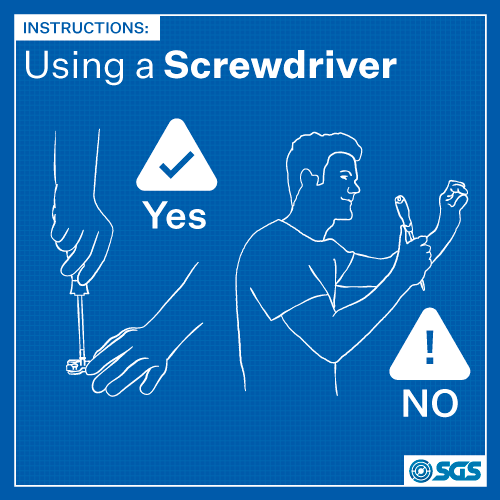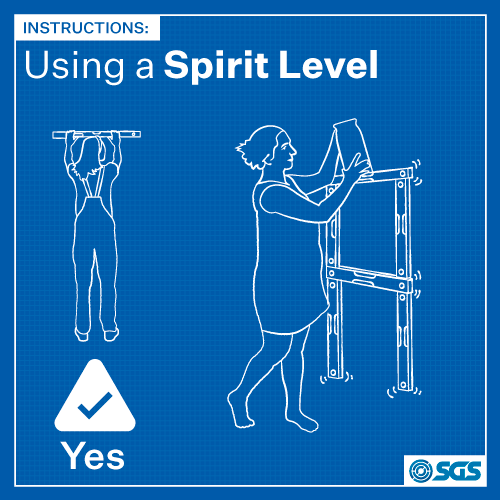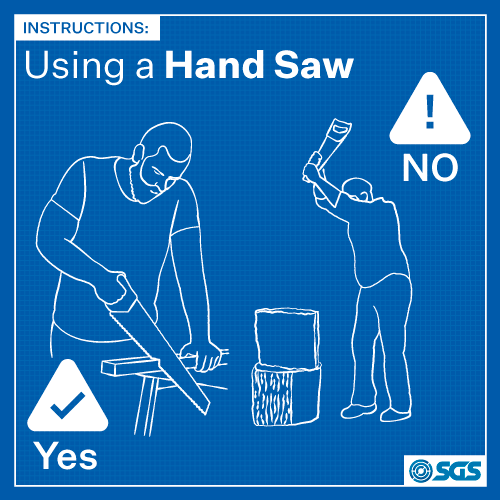With Britain experiencing a DIY boom over the last couple of years, many people are using their toolbox for the first time. With this in mind, we were keen to check in and test people on their toolbox knowledge, to see whether the last couple of years has turned us into a nation of DIY experts.
To do this, we ran a survey of 2,000 people, quizzing Brits on their knowledge when it comes to everyday tools that you might find in a common toolbox.
It turns out that some of you know exactly what you’re doing, but others are in need of a bit of a refresher on the do’s and don’ts when it comes to essential tools.
Britain and the humble jab saw don’t appear to get along too well, as only one in ten of the people we surveyed (10%) said that they could comfortably use one without any help or further research. The survey flagged the jab saw as the most difficult tool to get a hang of, according to DIYers in the UK.
A bog-standard screwdriver emerged as the most commonly owned tool in the country, as two thirds of people (67%) said that they have at least one screwdriver in their toolbox. Just one in ten own a nail gun (10%), and only one in twenty own a jab saw (5%)
| Ten Most Commonly Owned Tools | |
| Screwdriver(s) | 67% |
| Tape Measure | 66% |
| Spanner | 57% |
| Screw plugs nails | 57% |
| Stanley knife | 54% |
| Plier | 52% |
| Spirit level | 49% |
| Hand saw | 49% |
| Power drill | 47% |
| Claw hammer | 44% |
Despite the majority of people owning tools, it seems many wouldn’t know how to use them without looking up instructions. Over a third of Brits (39%) don’t know how to properly use a screwdriver.
A similar amount (40%) said that they wouldn’t even know how to use a tape measure properly! Almost half of Brits (49%) don’t know how to use a spanner. and half of Brits (50%) also don’t know how to correctly use a spirit level.
Brits are also not comfortable using power tools, with only 1 in 5 comfortable using a circular saw, 1 in 4 able to use a jigsaw and 1 in 3 being able to use a power drill. Even when the saw is not mechanical, over three quarters of Brits (79%) don’t feel comfortable using a simple hand saw.
The most common tool that Brits do not know how to use is the jab saw, with less than one in ten people (9%) able to use one without further help. A bolster (14%) and ball peen hammer (15%) emerged as other tools that are tricky to handle.
| Ten Most Common Tools That Brits Do Not Know How to Use Without Further Help | |
| Jab saw | 9% |
| Bolster | 14% |
| Ball peen hammer | 15% |
| Caulking gun | 20% |
| Circular saw | 21% |
| Ratchet | 22% |
| Tack Hammer | 22% |
| Cable detector | 23% |
| Club lump hammer | 24% |
| Metal snips | 24% |
Those in Scotland’s capital showed up as the worst in the UK when it comes to DIY knowledge, with one in seven (16%) of Edinburgh residents surveyed admitting that they would have to ask for help before using any tools. The DIY champions are just down the road in Glasgow, with just one in fifty (2%) Glaswegians admitting to needing help when using tools.
As a company passionate about tools, we had to jump into action after seeing the results from the survey. With many people reporting difficulties in using some of the most common tools correctly, we decided to put together a brief guide on how to safely use five of the most common items found in a toolbox.
How to use common tools – a safety guide
Screwdriver
The first step when safely using a screwdriver is to use a head that is the correct size and shape to match the screw. Once a suitable grip has been made into the surface, insert the screwdriver into the screw head and turn clockwise. To stay safe, ensure that your other hand is away from the screw in case the screwdriver slips away from the screw head.
Tape Measure
Though relatively safe to use, tape measures can retract very quickly, risking injury. Be sure to retract the tape slowly and carefully once you have finished using it.
Spanner
The best method for safely using a spanner is to pull the tool towards you, rather than pushing it away with force. This method helps you to keep in control more easily and reduces the likelihood of an injury.
Spirit Level
One of the simpler tools to use! Simply place the spirit level onto the object, which can be done vertically or horizontally. Move the object until the bubble is in the middle section of the liquid. Job done!
Hand Saw
For the sake of accuracy, you should use a pencil to draw a line where you would like to cut. Either firmly hold the piece of wood or fasten it still, and then start sawing with an initial short stroke. Once the saw is wedged in, you can start to saw faster.
In Summary
When starting a DIY project, it is essential to make sure you are fully confident in what you’re undertaking, and the correct use of tools is a key priority. Safety is of course the number one priority when using tools of any kind, and anyone looking to complete DIY work should be familiar with the correct procedure before starting.
Why not check out our safety gear and industrial workwear, which can be an important part of remaining safe when completing DIY work.




